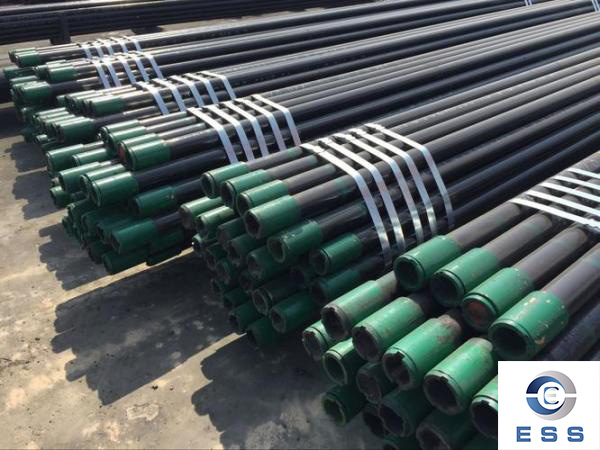Casing pipe: Common Sealing Methods

Common casing sealing methods include rubber sealing ring method, packing sealing method, welding sealing method, hydraulic sealing method and mechanical sealing method.
Rubber sealing ring method
Rubber sealing ring is a commonly used method in casing sealing. It has excellent sealing performance, can adapt to various conditions, and is easy to install. This method is to add a sealing ring around the root of the casing, insert the casing into the pipe to be sealed, and then pour aggregate, cement mortar or foam cement into the pipe to form a high-strength seal at the bottom of the pipe, and finally tighten the screws. It should be noted that the material and model of the rubber sealing ring should be adapted to the material and size of the pipe.
Advantages: simple process, easy to implement; convenient construction, good anti-seepage effect.
Disadvantages: long time consumption, small flow, unstable quality, environmental pollution.
Applicable scenarios: casing with small diameter and shallow depth, water supply pipe, drainage pipe, oil tubing etc.
When using, first install the rubber sealing ring into the flange part of the casing, then insert the casing into the pipe to be sealed, and finally tighten the screws.
Packing sealing method
Packing sealing is a method of filling sealing materials between the casing and the pipe and achieving sealing effect by compressing the packing. Commonly used packing materials include mud, polytetrafluoroethylene, graphite, cork, etc. It should be noted that when selecting packing, factors such as the chemical properties of the sealing material, high temperature, low temperature and corrosion should be taken into consideration to ensure the sealing of the packing.
Advantages: short time consumption, convenient construction, and good anti-seepage effect.
Disadvantages: small flow rate and environmental pollution.
Applicable scenarios: suitable for sealing underground structures such as residential buildings, factories, and underground parking lots.
Welding sealing method
Welding sealing method is a method of sealing the casing and the pipe by welding. At the same time, pay attention to the material and thickness of the pipe and casing during design and selection to ensure the strength and sealing of the welding.
Advantages: suitable for environments with high sealing requirements, such as high temperature, high pressure and corrosion.
Hydraulic sealing method
Hydraulic sealing method is a method of using liquid pressure to achieve sealing. The main principle is to push the liquid into the sealing cavity to form a high-pressure sealing layer to achieve the purpose of sealing.
Advantages: good sealing, long life, and adaptability to high temperature and high pressure environments.
Disadvantages: It is easy to reduce the sealing due to hydraulic oil leakage, air shortage and other reasons.
Mechanical sealing method
The mechanical sealing method is a method of achieving sealing based on friction and pressure between the sealing surface. Mechanical seals, such as mechanical seal carbon rings, mechanical seal springs and mechanical seal packing, are used to seal the casing.
Advantages: good sealing, long life and wide range of applications
Disadvantages: Regular maintenance and replacement of parts are required, otherwise it is easy to leak and cause equipment damage.
Summary
Different casing sealing methods have their own advantages and disadvantages and applicable scenarios. Construction personnel should choose the appropriate method based on actual conditions, and pay attention to safety and protective measures to ensure construction quality and worker safety.













 Eastern Steel Manufacturing Co.,Ltd not only improve product production and sales services, but also provide additional value-added services. As long as you need, we can complete your specific needs together.
Eastern Steel Manufacturing Co.,Ltd not only improve product production and sales services, but also provide additional value-added services. As long as you need, we can complete your specific needs together.










